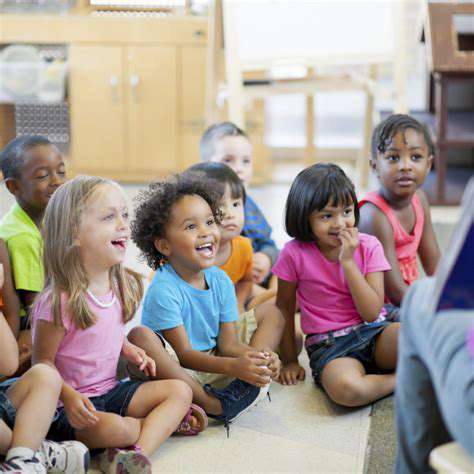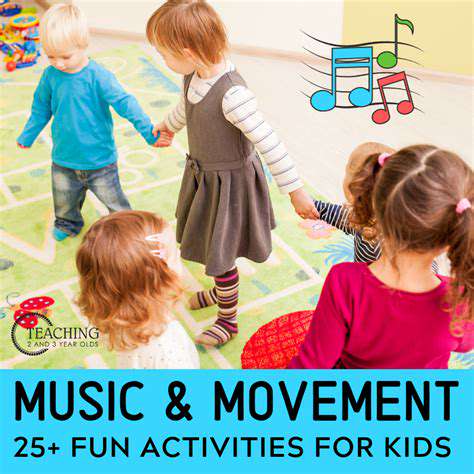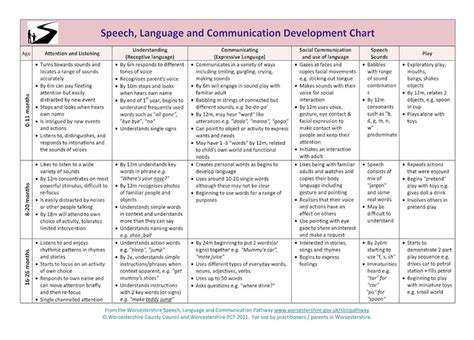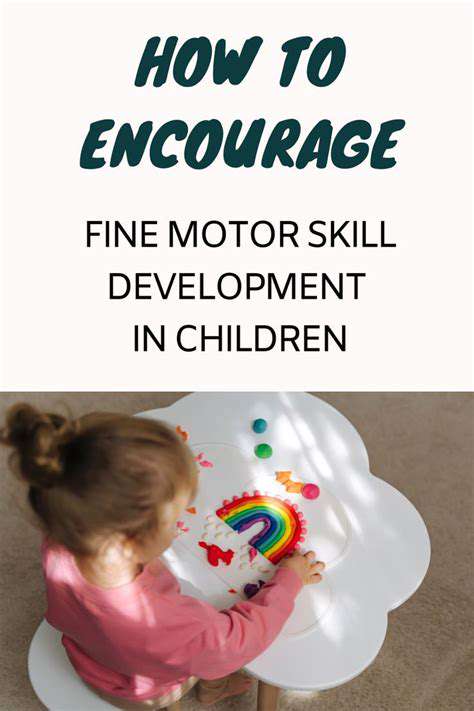괴롭힘 대처: 아이들을 친절하게 만드는 능력 부여

Developing Empathy and Prosocial Skills
Understanding Empathy
Developing empathy is a crucial step in fostering prosocial behavior and combating bullying. Empathy allows individuals to understand and share the feelings of others, recognizing that their actions have consequences beyond themselves. This understanding is fundamental to recognizing the impact of bullying on victims and understanding why it's important to intervene. It's about acknowledging that another person's perspective, even if different from your own, is valid and deserving of respect.
Helping children develop empathy involves exposing them to diverse perspectives. Reading stories about characters with different backgrounds, experiences, and emotions can broaden their understanding of the human experience. Encouraging active listening and thoughtful consideration of others' feelings, even when those feelings differ from their own, is essential in building empathy.
Cultivating Prosocial Behaviors
Prosocial behaviors, such as kindness, compassion, and cooperation, are directly linked to empathy. When children understand and share the feelings of others, they are more likely to act in ways that benefit those around them. Encouraging acts of kindness, like helping a classmate with a project or offering a comforting word to someone who's upset, reinforces prosocial behaviors and creates a positive social environment.
Role-playing scenarios that involve conflict resolution and helping others can provide valuable practice for developing prosocial skills. These activities allow children to understand different perspectives, identify appropriate responses to challenging situations, and learn to navigate interpersonal dynamics constructively. Positive reinforcement for prosocial behaviors further strengthens their motivation to act in kind and considerate ways.
Addressing Bullying Through Proactive Strategies
Developing empathy and prosocial skills in children is not just about preventing bullying; it's also about empowering them to be active bystanders and to intervene constructively. Understanding the motivations behind bullying behavior, from feeling ignored to seeking power, is an important part of addressing it. Encouraging a sense of responsibility and ownership for the well-being of others is crucial. This can involve discussions about the impact of words and actions on others, and the importance of standing up for those who are being bullied.
Promoting a Positive School Culture
Creating a supportive and inclusive school environment fosters empathy and prosocial skills. This involves implementing anti-bullying policies that are clear, consistent, and consistently enforced. Positive peer interactions and a sense of community are essential components of a supportive school environment. Encouraging students to celebrate diversity and value different perspectives helps build a culture of respect and understanding, which can greatly reduce the likelihood of bullying incidents.
Educating teachers and staff about the importance of recognizing and responding to bullying behaviors in a timely and appropriate manner can significantly impact the school climate. Fostering open communication channels for students to report incidents and share concerns without fear of retaliation is vital. Creating a school culture where empathy and prosocial skills are valued and reinforced is crucial to preventing bullying and creating a positive learning environment for all students.
Creating a Positive School and Home Environment

Fostering a Supportive Environment
Creating a positive school and home environment is crucial for student success. Students thrive when they feel safe, respected, and supported, both in the classroom and at home. This supportive environment allows students to focus on learning and personal growth without the distractions of fear or negativity. Encouraging open communication and active listening between students, teachers, and parents are essential elements in building this foundation.
Establishing Clear Expectations
Establishing clear expectations for behavior and academic performance is vital. These expectations should be communicated effectively to students and parents, ensuring that everyone understands the standards and the consequences of not meeting them. Consistency in enforcing these rules is key to maintaining order and promoting a productive learning atmosphere.
Promoting Open Communication
Open communication is the cornerstone of a positive school and home environment. Regular communication channels between teachers, parents, and students can address concerns promptly, fostering a sense of partnership and collaboration. This proactive approach can prevent misunderstandings and proactively address potential challenges.
Encouraging Active Participation
Encouraging active participation from students, teachers, and parents is essential. Engaging students in classroom discussions, extracurricular activities, and decision-making processes allows them to feel valued and empowered. This boosts their confidence and motivation, ultimately improving their overall well-being.
Addressing Challenges Constructively
Addressing any challenges that arise in a constructive and supportive manner is crucial. Identifying and addressing issues early can prevent them from escalating and negatively impacting the learning environment. This requires a proactive approach, focusing on solutions rather than placing blame.
Celebrating Successes
Regularly celebrating successes, both big and small, is important for maintaining motivation and enthusiasm. Recognizing and rewarding effort and achievement fosters a positive and encouraging atmosphere. This can be done through classroom acknowledgments, school-wide celebrations, or even simple verbal praise. Acknowledging successes, no matter how small, helps reinforce positive behaviors and attitudes.
Building Strong Relationships
Building strong relationships between students, teachers, and parents is paramount. Strong relationships foster trust and understanding. These relationships allow for open dialogue and collaboration, which are critical for addressing issues and celebrating achievements. Developing these strong relationships creates a sense of community and belonging, which is essential for a positive learning environment.
Teaching Kids to Advocate for Themselves and Others
Identifying and Recognizing Bullying
Bullying can manifest in various forms, from physical aggression to emotional manipulation and social exclusion. It's crucial for children to recognize the subtle and overt signs of bullying, whether it's hitting, name-calling, spreading rumors, or excluding someone from activities. Learning to distinguish between playful teasing and deliberate harm is a vital skill in fostering a safe and respectful environment for everyone.
Parents and educators play a key role in teaching children to identify the different types of bullying and to understand that these actions are never acceptable. This involves providing examples and scenarios, encouraging open communication, and helping children understand the impact of bullying on the victim.
Developing Assertiveness Skills
Assertiveness is a crucial tool for children to confidently express their needs and boundaries while respecting the needs of others. It's about standing up for oneself without resorting to aggression or passivity. Teaching children how to say no, express their feelings, and set healthy limits is vital for their overall well-being and ability to navigate social situations effectively.
Role-playing scenarios and practicing assertive responses can greatly enhance a child's ability to advocate for themselves. This process can involve practicing different ways to respond to bullying situations, such as calmly stating their discomfort or seeking help from trusted adults.
Empathy and Perspective-Taking
Understanding and sharing the feelings of others is fundamental to advocating for oneself and others. Developing empathy allows children to see situations from different viewpoints and understand how their actions might impact others. Encouraging children to consider the perspectives of those being bullied is essential for fostering a compassionate and supportive environment.
Building a Support Network
Creating a strong support network is critical for children to feel empowered to address bullying. This network can include trusted adults like parents, teachers, counselors, and friends who can offer guidance and support when needed. Knowing they have people to confide in can significantly reduce the impact of bullying and help them feel safe and secure.
Encouraging children to talk to their trusted adults about bullying, and then listening attentively, is a vital part of this support system. This open communication helps children feel supported and empowered to navigate challenging situations.
Conflict Resolution Strategies
Teaching children effective conflict resolution strategies is essential for handling disagreements and potentially bullying situations constructively. This includes learning to communicate their needs clearly, actively listening to others' perspectives, and finding mutually agreeable solutions. Learning to de-escalate conflicts peacefully is an important life skill that can prevent and resolve many conflicts.
Reporting and Seeking Help
Empowering children to report bullying is crucial for stopping the behavior. This includes knowing who to contact, such as a teacher, counselor, or parent, and understanding the importance of reporting incidents. Children need to know that their concerns will be taken seriously and that they will be supported in addressing the situation.
Creating a safe and supportive environment where children feel comfortable reporting bullying incidents is critical. This involves clear communication about reporting procedures, assuring children that they will not be punished for speaking up, and promptly addressing reported incidents.
Building a Community of Support

Cultivating Connection
Building a strong support network is crucial for navigating life's challenges and celebrating its triumphs. A community of like-minded individuals can provide emotional support, practical assistance, and a sense of belonging. This shared experience fosters understanding and empathy, making it easier to overcome obstacles and to celebrate milestones together. It's important to remember that support networks aren't just about receiving help, but also about giving it. Contributing to others' well-being strengthens the bonds within the community and creates a cycle of mutual support.
Cultivating meaningful connections with others often involves actively seeking out opportunities to engage and collaborate. This can involve joining clubs, volunteering, attending workshops, or simply engaging in conversations with those around you. The key is to be open to new experiences and interactions. These connections may be formed in unexpected ways, and it's these often-unforeseen bonds that can provide the greatest support in times of need.
Identifying Shared Values
A strong support community is built on shared values and a commitment to mutual respect. Understanding and appreciating the different perspectives and experiences within the group is paramount to fostering a welcoming and inclusive environment. Open communication and active listening are essential to building trust and ensuring that everyone feels heard and valued. This shared understanding creates a sense of belonging and strengthens the bonds that hold the community together.
It's crucial to acknowledge and respect the diversity of perspectives and experiences within the community. Celebrating differences, rather than trying to erase them, enriches the group dynamic. By valuing each individual's unique contribution, the community can flourish and adapt to changing circumstances.
This shared sense of purpose and collective values provides a strong foundation for the community to weather challenges and celebrate successes together. Finding common ground and focusing on mutual goals will create a stronger and more resilient support system.
Strategies for Growth and Maintenance
Maintaining a vibrant and supportive community requires consistent effort and proactive strategies. Regular communication, whether through in-person gatherings, online forums, or other channels, is essential to keep the lines of communication open and to ensure that everyone feels connected. Creating opportunities for shared activities, such as workshops, events, or outings, fosters deeper bonds and allows members to connect on a more personal level.
To maintain the vitality of the community, it's imperative to foster a culture of continuous learning and growth. Regular check-ins, feedback sessions, and opportunities for personal development can strengthen relationships and promote mutual understanding. Actively engaging in activities that encourage personal growth can also help to foster a more supportive and empathetic environment.
Addressing conflicts constructively and promptly is also crucial. Establishing clear guidelines and conflict resolution processes will ensure that disagreements are handled fairly and respectfully, preserving the positive atmosphere of the community. A commitment to ongoing improvement, in all areas, will help to ensure the long-term sustainability and prosperity of the community.











